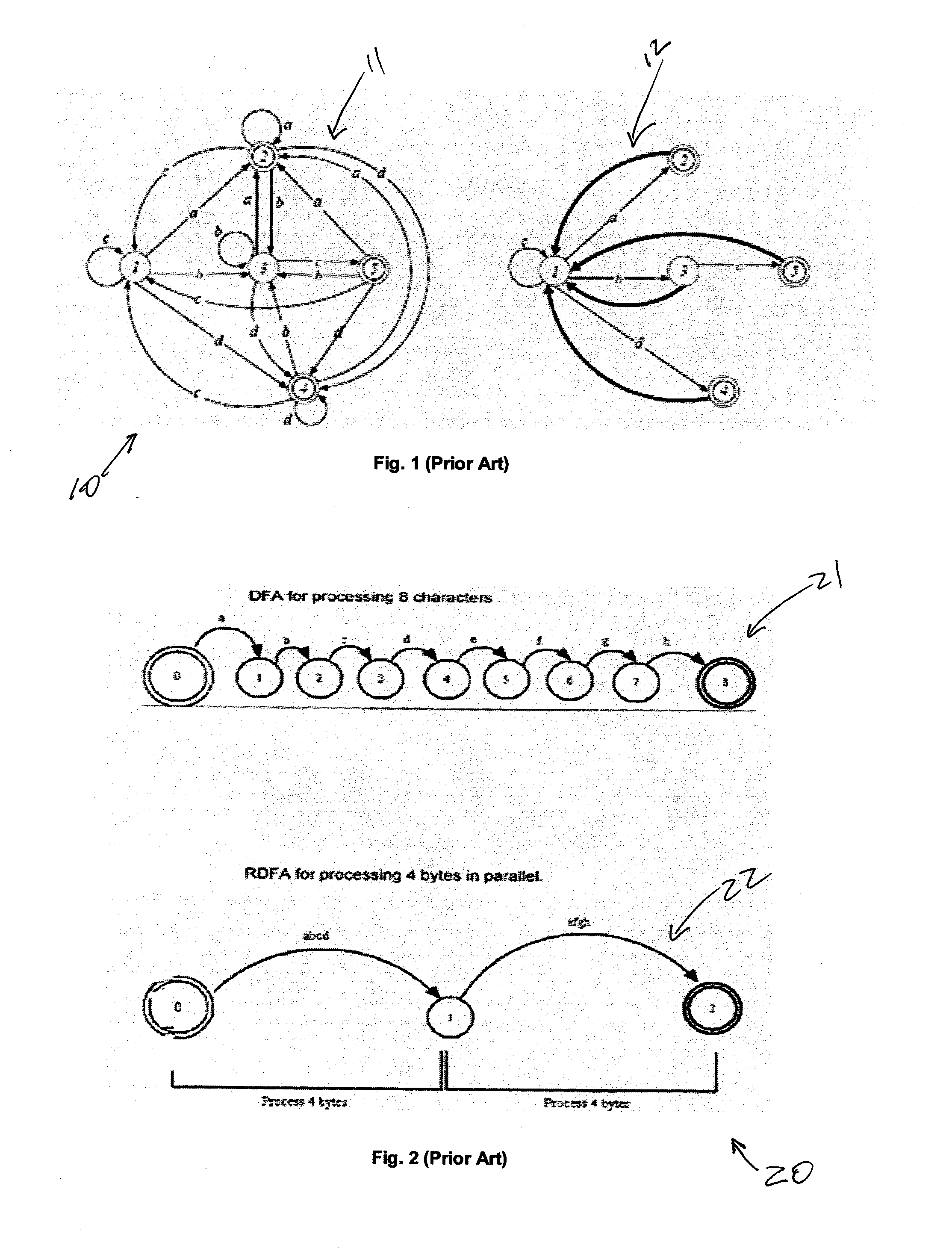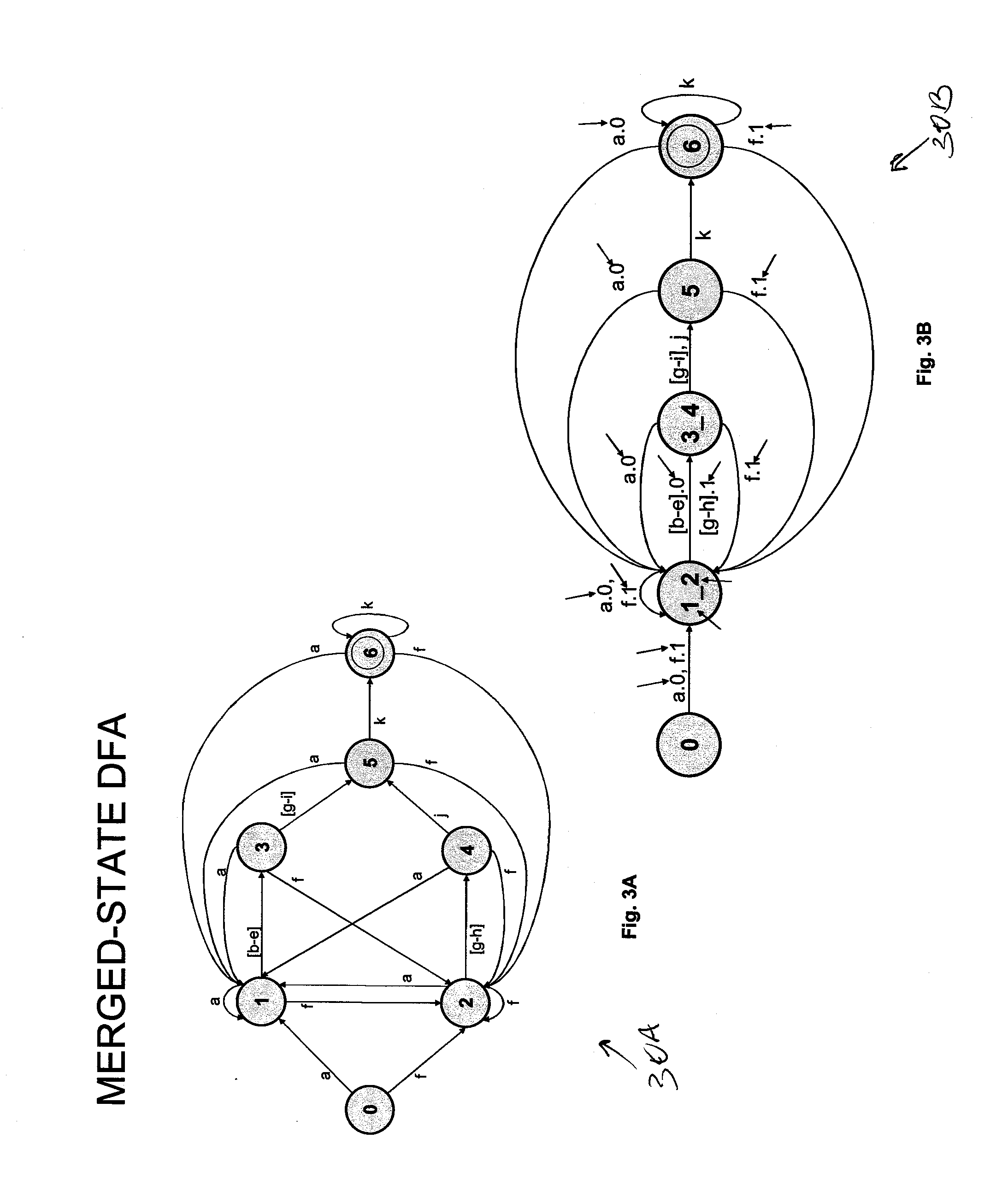Fast and scalable process for regular expression search
a regular expression and process technology, applied in the field of regular expression matching, can solve the problems of prohibitive memory usage, prohibitive memory requirements, and complicated merging multiple regular expressions, and achieve the effect of reducing the memory required for pattern matching and reducing the deterministic finite automata (dfa)
- Summary
- Abstract
- Description
- Claims
- Application Information
AI Technical Summary
Benefits of technology
Problems solved by technology
Method used
Image
Examples
Embodiment Construction
[0025]The invention addresses the memory blow-up of deterministic finite automatas DFAs and the slow speed of non-deterministic finite automatas NFAs. One aspect of the invention is reduction of a DFA, such as state merging, where two or more non-equivalent states in a DFA can be merged into a single state using transition labels. Coupled with an enhanced data structure, this merger compresses the DFA by an order of magnitude in practice. The second aspect of the invention is an abstracted hybrid automaton where a DFA is abstracted and combined with an NFA to build an automaton that has the speed of a DFA and the compactness of an NFA.
[0026]State Merging. The inventive state merging is a technique that allows non-equivalent states in a DFA to be merged using a scheme where the transitions in the DFA are labeled. By carefully labeling transitions, in effect, we are transferring information from the nodes to the edges of the graph representing the DFA. A data structure for representin...
PUM
 Login to View More
Login to View More Abstract
Description
Claims
Application Information
 Login to View More
Login to View More - R&D
- Intellectual Property
- Life Sciences
- Materials
- Tech Scout
- Unparalleled Data Quality
- Higher Quality Content
- 60% Fewer Hallucinations
Browse by: Latest US Patents, China's latest patents, Technical Efficacy Thesaurus, Application Domain, Technology Topic, Popular Technical Reports.
© 2025 PatSnap. All rights reserved.Legal|Privacy policy|Modern Slavery Act Transparency Statement|Sitemap|About US| Contact US: help@patsnap.com



